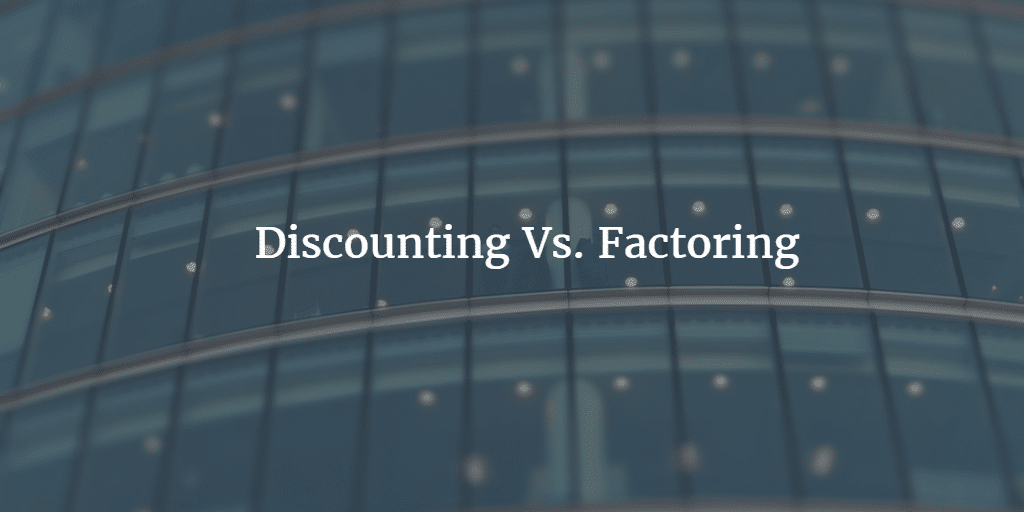Invoice factoring and invoice discounting are both asset finance types that help businesses release cash which tied in invoices. A funder can be a bank, alternative financier, or invoice factoring company that lend against an outstanding debtor balance or accounts receivable.
Simply put, factoring and discounting are cash flow solutions.
Factoring makes more sense for small business owners that do not have time or staff to chase down invoice payments.
Also, read about how to pick a factoring company
The difference between Invoice Factoring and Invoice Discounting
Collection: The factoring provider is responsible for collecting the invoice while in discounting, the business issuing the invoice is responsible for its collection.
Confidentiality: Customers in factoring know the business is using a factor while in discounting, they are unaware the invoice is being factored.
Fees: In factoring, the invoice value is about 1.5% to 4.5% while in discounting the invoice value is 1.5% to 2.5%.
Company Size: Factors prefer smaller companies because they want control of collection to reduce risk while in discounting, they generally look for larger companies with high turnover and more creditworthy customers which more or less helps to mitigate loss.
Flexibility: In factoring, a business can decide whether to finance an invoice or turn it down while in discounting, usually must finance its entire invoice book.
Benefits: A company can access cash much more quickly than they otherwise would if they were obliged to wait until a debtor settled the amounts due while in discounting the process is highly confidential and still offers the same benefits as factoring.
Sales Ledgers: In discounting, your business retains control of its own sales ledger chases payment in the usual way.
While in factoring the provider takes the role of managing the sales ledger, credit control and chasing customers for settlement of their invoices.
Invoices: The customers settle their invoice directly with the factoring company so clients are usually aware of the factoring arrangement.
While in discounting, clients are not usually aware of the arrangement due to privacy rules hence they pay you directly.
The benefits of Factoring and Discounting
- Both invoices release within 24 hours up to 90% of the value of outstanding invoices.
- Additional assets are not required before funding can be secured.
- If you are in a cash crunch or want to grow your business, you need to look into this kind of financing.
- If you have increased turn over, this increases your chances of securing this kind of funding.
- Power to negotiate discounts on this kind of invoices is pegged on paying supplier invoices.
- The invoices are usually competitively priced.
- Excellent business guidance is usually provided in both factorings as well as discounts.
Also Read: What to know about Invoice Factoring
Who uses Factoring and Discounting?
Businesses which are eligible to apply for factoring and discounting include:
- Construction
- Recruitment
- Manufacturing
- Wholesalers
- Printers
- Couriers
Invoice Factoring and Invoice Discounting are useful options for:
- Business startups that need start-up finance to get their companies u[p and running.
- Growing businesses that need the funds as well as putting back funds made to make more profit out of it.
- Struggling businesses that need funds to bridge gaps between invoicing customers and getting paid.




